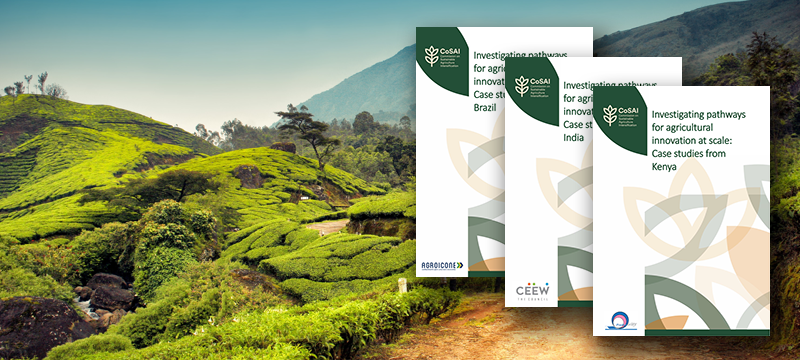
Investigating pathways for agricultural innovation at scale in Brazil, India and Kenya
Innovation for sustainable agricultural intensification (SAI) is challenging. Changing agricultural systems at scale normally means working with partners at different levels to make changes in policies and social institutions, along with technical practices. This study extracts lessons for practitioners and investors in innovation in SAI, based on concrete examples, to guide future investment.
Three country case studies were commissioned by CoSAI and led by Agroicone (Brazil), CEEW (India) and Resource Plan (Kenya). They systematically review SAI innovation success stories at scale in three types of agriculture: small-scale, medium- to large-scale, and urban and peri-urban. The reports examine which factors led to success and how the cases measure up in terms of meeting environmental, social and economic objectives, and managing the trade-offs between them.
Find out more in this CoSAI policy brief.
The country case studies are complemented by a global synthesis of case studies.
ACTIONS NEEDED
|
Read our policy brief to learn more.
